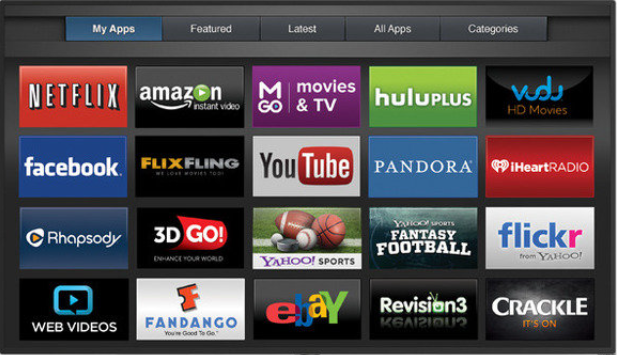HOW TO BUY A USED CAR
So you want to know how to buy a used car. For many people, buying a used car is a stressful time, unless you are a mechanic. Not for me, I admit, I love, absolutely LOVE, going into a dealership and haggling away at the sticker price of a car. I’ve had sales folks laugh in my face and outright refuse to do business with me ONLY to email me later telling me that they decided to accept my final offer. Today’s lemon laws, for the most part, only protect new car buyers. There are only a few states that have used-car lemon laws. This lack of protection only adds to the angst that potential used-car buyers feel when they begin their search. Unless you are an expert on today’s internal combustion engines, the one thing you have absolute control over, when buying a used car, is the price. You do not want to compound your troubles by over paying for your used car.
I know absolutely nothing about cars but I saved $4,000 on my last used-car purchase. This post lays out my 5 Rules for buying a used car. I had to learn the hard way over the years but I’m happy to say that this method has served me well.
Rule #1 – Excluding a private owner sale, the best place to buy a used car is at a new car dealership. These are usually trade-ins that they’ve purchased when selling a new car. These dealers are not in the business of selling used cars so they want them off the lot as quickly as possible. Take advantage of that.
Know what you want BEFORE you start looking
Before you do anything, you need to calculate your price point of what you can realistically afford. Too many times folks think they have an idea of what they can afford and then get to the dealership and the salesman shows them a car several thousands of dollars over their price range. But don’t worry he says, I’ll get you a great deal with some special financing in place so that you can afford this car.
Rule #2 – If you are planning to finance your purchase, never, ever tell the salesman how much you can afford as a monthly payment. Only give them a ballpark figure for the final out-the-door price you are willing to pay.
Narrow down your models and types of vehicles you want to purchase. Are you looking for a Nissan Altima or a Chevrolet Equinox? Do you want an SUV, a cross-over, a sedan or sports model? Is gas mileage important to you? If not, it should be! Is there a particular year of car you have in mind. Many times, car manufactures completely change the look and feel of a model from one year to the next. You may have really liked the 2002 model of the Honda CRV, like many folks out there. If so, narrow your search to that specific model. Some of the questions you need to ask yourself during your research include:
What is the blue book value of the car?
What is the true resale value of the car?
Does this particular model hold its value?
What is the dependability of the car?
Have you noticed many cars of the same model on the roads?
What are others saying about the make and model car?
Have there been any major recalls or known defects in the model?
Do you know anyone who has a similar or exact model that you can get information from?
There are plenty of websites that offer a ton of information that will help you narrow down your search and give you a decent price point. You should visit each local dealer’s website and record all the cars you are interested in. Put it down on paper or keep a spreadsheet. Keep track of the dealership names and addresses, names of the Internet sales folks, the models available and of course the sticker prices. It is important to remember that the prices you find on these sites are just a starting point. You can and should pay less. Some of the sites I use are:
www.edmunds.com
www.kbb.com
www.nadaguides.com
Rule #3 – Research the make and models thoroughly. What are other people saying about their experiences with the vehicle? There are so many sites with tons of information and forums. You’ll find data on what others have paid, what kind of problems to expect and the true value of what your car may be worth.
Begin your search
You are now ready to start your search for your used car! This next step is crucial. You must only deal with the Internet sales department of the dealership. Never go to the car lot without getting the name of the person or people that work specifically with Internet inquiries. Most dealerships now have dedicated personnel for this. When you start by only working with the Internet sales department, you automatically will be treated differently. They know that you are most likely using the Internet for research, therefore you probably have a very good idea of what the car is worth. The sales personnel already know that you are a savvy and informed buyer.
The first thing I like to do is draft an email and blast it to all the local car dealerships in my area. You will begin receiving email responses almost immediately. Be very specific in your email to the dealership. Include make, model, year, mileage, features, time frame and ballpark price. Tell them you have begun your search around town and you are ready to schedule test drives.
Rule #4 – Information is power. The more you know about the car for sale, the cheaper price you will pay. Find the True Market Value (TMV) of the car. Edmunds has a nice calculator. Record this price and use it as a baseline but by no means is this the price you should pay for the vehicle. Your offer should always be lower.
Test drives and inspections
You are at the dealership and meet with your salesman or saleslady. When you get to the vehicle, make sure to inspect and test everything. Walk around the car looking for scratches, dents and wear. You are looking for any signs of an accident or even the slightest fender bender. Look underneath the vehicle for rust and for oil spots. If you suspect the car is leaking oil, walk away and pick another car. Pop open the hood, even if you have no idea what you are looking for. Check the tires, are they new or do they have some wear. Take note and use this information to your advantage. Check the interior for overall cleanliness. Are there any tears or stains, if so make a mental note.
During your test drive, make sure you test everything including electronics, lights, hi-beams, low-beams, blinkers, interior dash lights, radio, speakers, horn, heat, air conditioner, etc. Do not leave any stone unturned. Take the car for a test drive on the side streets and the highway. Make sure to take it for a nice long drive. I once drive a car, without the sales person, 20 miles to my house and 20 miles back. As you are driving, listen for any unusual noises. Thoroughly test the brakes, don’t be shy. Give them a good test. Note the acceleration, smoothness or roughness, how it idles when stopped, how it handles tight turns, etc.
If you like the car and feel that you might want to make an offer, start making a list of all the negatives you’ve encountered with this vehicle. You will use this checklist to chip away at the sticker price. For example, when I purchase my last used-car, I noticed the tires were very worn. The salesman told me it had another year on it, don’t fall for it. Tires are expensive. I deducted the cost of four new tires, rotation, balance and service. If you do not know how much this will cost, call a local repair shop or ask for their service department’s cost. Also, I didn’t like the way the brakes felt and I knew I would be replacing them very soon. That is an expensive proposition so I deducted that from the cost as well. I noticed the driver’s side taillight was cracked. This car was in a minor accident so I substracted a few more dollars! In the process of doing my research, I happened to know that the value of Mitsubishi Montero Sport SUV’s do not hold their value whatsoever. This was another reason to tick off a few more bucks. Finally, ask to see the records for the car including the Carfax report and how long it has been on the lot. If the car has been on the lot longer than 45 days, cha-ching! I’m taking some more money off the top.
It’s important to note that you should be subtracting these “negatives” from the TMV cost or fair price for the car, NOT from the sticker price! For example:
| Description | Totals | Sub-total |
| Sticker Price | $6,800 | $6,800 |
| TMV | $5,300 | $5,300 |
| Total cost of negatives | $2,100 | $3,200 |
| Taxes, registration and fees | $ 400 | $ 400 |
| Your final offer | $2,800 |
Rule #5 – Make sure to establish or calculate your offer price and stick to it. Your offer price should be lower than your out-the-door price which includes taxes, registration and fees. In the example above, if you estimate these additional costs to be approximately $400, then your “real” cost is $3,200 so your offer should be $2,800.
There you have it. If you stick to this formula, you will save thousands on your next used-car purchase. As for the used car that I saved thousands on, it was a 2002 AWD Mitsubishi Sport, w/130,000 miles. We’ve had it two years as of January 2014 and things are going well so far. I knew the car would need some work and we’ve put in approximately $1,000 into some repairs. It has new brakes, rotors, pads, tires and a couple of other things. It is driving nicely and we hope to keep it another 2-4 years or more.
Good luck used-car hunting!



